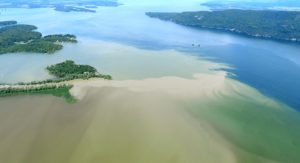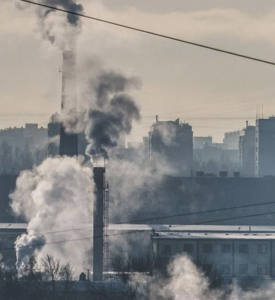According to the EPA, nonpoint source pollution is now the greatest cause of water quality problems in the country.
Fortunately, the United States has come a long way from the days when untreated, hazardous waste was habitually poured into the nation’s waters by sewage treatment plants, factories, and other specific points of discharge. However, pollution that can’t be directly linked to a single source has proven to be far more difficult to contain.
Nonpoint source pollution occurs when rainfall or snow melt moves across land, picks up pollutants such as fertilizers and bacteria from pet waste, and then deposits these pollutants into lakes, rivers, coastal waters, and groundwater.

Our Nonpoint Source Pollution Workgroup meets regularly to discuss new developments in policy and funding for programs to manage and track nonpoint source pollutants.
NEIWPCC hosts a regional conference on nonpoint source pollution every spring. In 2016, 2018, and 2023 the EPA asked NEIWPCC to run a national training workshop for state, federal, territorial, and tribal nonpoint source program managers.
Other NEIWPCC programs and workgroups overlap with nonpoint source issues. Harmful algal blooms are fed by nutrients that reach water bodies in runoff; mercury and other substances, including many emerging contaminants are spread by atmospheric deposition (below).
The chief tool for managing nonpoint source pollution is a kind of pollution budget called a total maximum daily load. NEIWPCC funds programs and convenes workgroups to address both septic systems, a nonpoint source, and stormwater, a significant source of polluted runoff.
NEIWPCC employees won an Environmental Merit Award in 2014 for their role organizing the Northeast Voluntary Turf Fertilizer Initiative. Many partners and stakeholders met to develop guidelines to manage fertilizer use.
Atmospheric Deposition Fact Sheets

From Air to Water: The Challenge of Atmospheric Deposition
What starts as air pollution may end up as water pollution as dangerous compounds emitted into the air fall into surface waters. In fact, nitrogen, sulfur, and mercury compounds are pollutants of particular concern in the Northeast that make their way into water primarily through atmospheric deposition.
The fact sheets describe the mechanisms of atmospheric deposition, its impact on nonpoint source pollution in watersheds, monitoring and modeling strategies, and the need for collaboration in the fight against this phenomenon. The publication was funded through a CWA Section 319 Grant provided to NEIWPCC by the Vermont Department of Environmental Conservation.
Additional Resources
EPA’s Nonpoint Source (NPS) Home Page
USDA’s Environmental Quality Incentives Program
Nonpoint Education for Municipal Officials – (NEMO) University of Connecticut Cooperative Extension
Connecticut DEEP – NPS Management Program
Maine DEP – Bureau of Land, Watershed Planning and Management Division, NPS Pollution Program
Massachusetts DEP – Nonpoint Source Pollution
New Hampshire DES – Water Division
New York State DEC – Division of Water, Bureau of Water Permits
Rhode Island DEM – Office of Water Resources, Water Quality Division, NPS Pollution Program
Vermont DEC – Watershed Management Division, Clean Water Initative

